 Facebook
Facebook
 X
X
 Instagram
Instagram
 TikTok
TikTok
 Youtube
Youtube
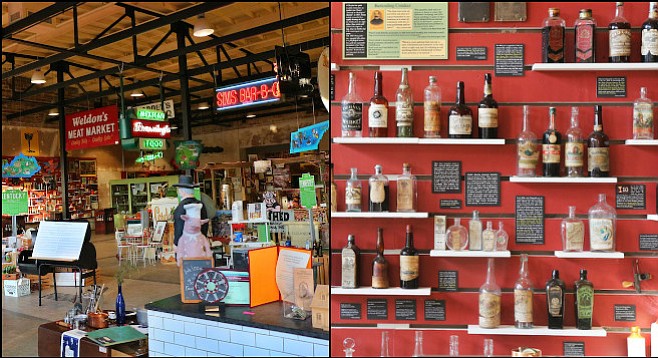
Banned for ninety-five years in the United States until 2007, absinthe has garnered almost a century’s worth of mystique as a drink responsible for festive delusions.
But such mystique is no match for the knowledge of Elizabeth Williams, president of the SoFAB Institute, parent organization of the Museum of the American Cocktail in New Orleans. “If you get really drunk and you see pink elephants, it’s just because you’re really drunk,” she told my wife and me as we overlooked a curiously slotted, arrow-shaped utensil, known as an absinthe spoon, resting on the rim of a glass.
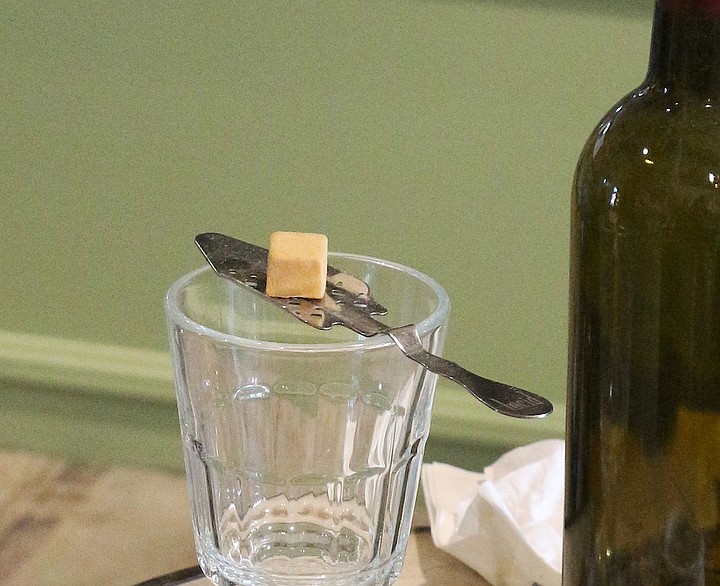
The slotted spoons, found next to a marble fountain with enough spouts to simultaneously prepare four glasses of absinthe to each customer’s liking, are part of the museum’s cluttered absinthe room.
The room recalls a time when the city hosted several absinthe houses a century ago. A steady drip of water over a sugar cube atop the spoon both dilutes and sweetens the herbal liquor.
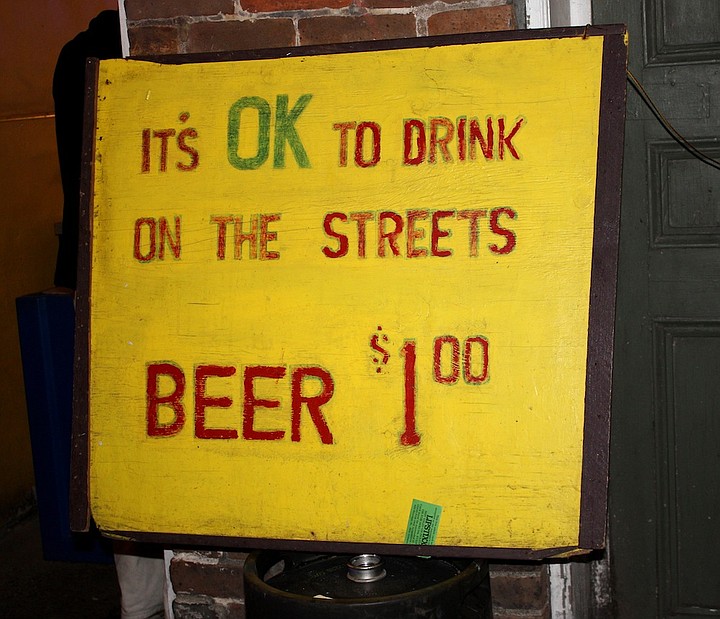
Back from a brief stint in Las Vegas, the museum has returned to New Orleans. An appropriate place for a cocktail museum, the city, in the words of Dale DeGroff, the museum’s founder, whom I’d chatted with over the phone before my arrival, has “one of most liberal views on drinking in the country.” I immediately recalled a previous walk down Bourbon Street, the city’s epicenter of nightlife, where I had seen a hand-painted sign on the sidewalk that announced “It’s OK to drink on the street.”
Owing to French and Spanish influences from past eras, New Orleans is an oddity in America. The city’s history is visible in its architecture, especially in the wrought iron balconies found along the French Quarter’s walkable blocks. Its history is audible in its music, whose roots in Acadian, African American, and French ballroom traditions have created the city’s modern palette of jazz, blues, Cajun, and zydeco, heard seven nights a week in the city’s dozens of clubs.
On a previous Monday, I checked out Charmaine Neville's uncannily spot-on impressions of Louis Armstrong at Snug Harbor, and then walked over to Tropical Isle’s Bayou Club for some dancing in the aisles to the bilingual tunes of a live Cajun band.
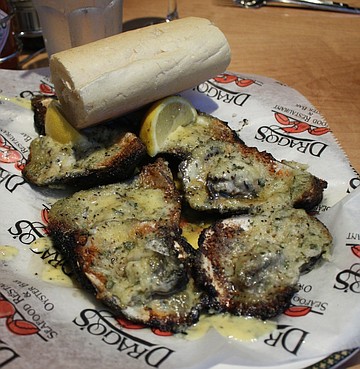
The city’s cuisine reflects such rich mixing as well, since French and Spanish influences have further mingled with Southern American, Italian, and barbecue. New Orleans is one of America’s culinary capitals, famous for such specialties as turtle soup au sherry (a luxuriantly thick version is served at Mandina’s), crawfish etouffee, jambalaya, and gator bites (think Slim Jims but leaner, healthier, and made from farmed alligators; they’re available at the French Market). During every visit to New Orleans, my wife and I go to Drago's to score a dozen chargrilled oysters, each one puffy and covered with browned, bubbling Parmesan cheese.
The Museum of the American Cocktail’s location within the city was as well chosen as the city itself. The museum shares the same open warehouse space as the Southern Food and Beverage Museum. One admission charge ($10; students/seniors $5) covers both.
“We have no walls because we feel like the food is porous at political boundaries,” said Williams. Throughout the museum’s layout in which cuisine mingles across state lines, the past and present also mingle, as if the collection were following a well-used, handwritten recipe calling for equal parts homage, instruction, history, and celebration.

Next to the island counter of the museum’s modern demo kitchen stood a sixty year-old Westinghouse electric roaster with a trapezoidal face plate that wouldn’t have looked out of place on the grill of a Ford Fairlane. The roaster came with its own stand because “in so many kitchens,” said Williams, “there was just a table.”
The recent past is also represented, showing one way New Orleans rose from the ravage of Hurricane Katrina: humor. A cart known as the Katrina Deli uses gastronomy as a vehicle to poke fun at politicians, featuring a display of faux delicacies such as oysters hepatitis B-ienville and chicken a-la FEMA (with the caveat “will be delivered to your table in 6-8 weeks”). The cart, created by the comedy group Krewe de Levee-té, was paraded through the city during the 2006 Mardi Gras.
Considering the inclusion of crab hammers and wine bottles of Maryland, as well as a display describing the White House’s tradition of hardwood-fired barbecue, General Grant would probably have not approved of the geographic breadth of what the museum considers Southern. The museum follows the more traditional Mason-Dixon Line for its northernmost cutoff.
The District of Columbia’s display is just one part of the museum’s coverage of all things barbecue.
“Everything is a trail through the museum,” said Williams, referring to the museum’s current exhibit titled the Trail of Smoke and Fire. “BBQ is not monolithic. In some parts of the south, it might be mutton or chicken. Or along the gulf coast we have roasted oysters and smoked mullet and other kinds of fish. And we’ve put them in the states where they happen just for context.”
A life-sized cutout of ample-bellied Pitmaster Ed Mitchell, master of whole hog barbecue, stands behind a smoker and represents North Carolina, while a rack of smoked hams tied to wooden beams anchors Virginia’s contribution. The iconic choices were selected by culinary writer and television host Steven Raichlen, the museum’s barbecue curator. What other place on the planet can boast a barbecue curator other than the Southern Food and Beverage Museum?
Some displays are balanced atop items you’d find in homes and small commercial kitchens – empty six-pound cans of tomato sauce and milk crates, contributing to the museum’s casual, comfortable atmosphere. The garbage pails scattered around the space invite patrons to eat while browsing.
“We are a food and beverage museum,” said Williams, “and we are not afraid of food and drink.”
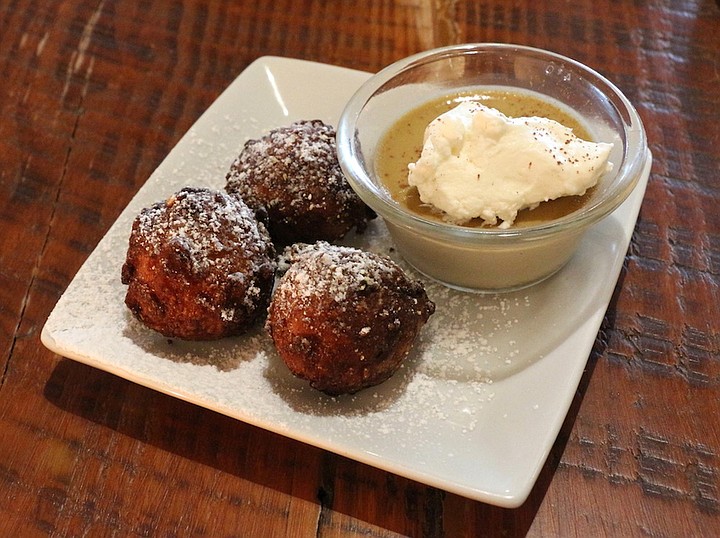
While the museum shows where Southern food has been, let’s not forget the present. My wife and I began smelling the alluring scents from Purloo, a restaurant tantalizingly separated from the museum by nothing more than a curtain. We enjoyed chef Ryan Hughes’ modern take on New Orleans cuisine – corn tamales with crawfish and feta, and sweet rice calas (similar to hushpuppies) served with a café au lait pot de crème.
After encouragement from the bartender, I accompanied the meal with a death in the afternoon – a mixture of champagne and absinthe purportedly invented by Ernest Hemingway. That afternoon, thankfully, I met with neither the reaper nor pastel-colored pachyderms at this destination built for foodies in a city for foodies.


Banned for ninety-five years in the United States until 2007, absinthe has garnered almost a century’s worth of mystique as a drink responsible for festive delusions.
But such mystique is no match for the knowledge of Elizabeth Williams, president of the SoFAB Institute, parent organization of the Museum of the American Cocktail in New Orleans. “If you get really drunk and you see pink elephants, it’s just because you’re really drunk,” she told my wife and me as we overlooked a curiously slotted, arrow-shaped utensil, known as an absinthe spoon, resting on the rim of a glass.

The slotted spoons, found next to a marble fountain with enough spouts to simultaneously prepare four glasses of absinthe to each customer’s liking, are part of the museum’s cluttered absinthe room.
The room recalls a time when the city hosted several absinthe houses a century ago. A steady drip of water over a sugar cube atop the spoon both dilutes and sweetens the herbal liquor.

Back from a brief stint in Las Vegas, the museum has returned to New Orleans. An appropriate place for a cocktail museum, the city, in the words of Dale DeGroff, the museum’s founder, whom I’d chatted with over the phone before my arrival, has “one of most liberal views on drinking in the country.” I immediately recalled a previous walk down Bourbon Street, the city’s epicenter of nightlife, where I had seen a hand-painted sign on the sidewalk that announced “It’s OK to drink on the street.”
Owing to French and Spanish influences from past eras, New Orleans is an oddity in America. The city’s history is visible in its architecture, especially in the wrought iron balconies found along the French Quarter’s walkable blocks. Its history is audible in its music, whose roots in Acadian, African American, and French ballroom traditions have created the city’s modern palette of jazz, blues, Cajun, and zydeco, heard seven nights a week in the city’s dozens of clubs.
On a previous Monday, I checked out Charmaine Neville's uncannily spot-on impressions of Louis Armstrong at Snug Harbor, and then walked over to Tropical Isle’s Bayou Club for some dancing in the aisles to the bilingual tunes of a live Cajun band.

The city’s cuisine reflects such rich mixing as well, since French and Spanish influences have further mingled with Southern American, Italian, and barbecue. New Orleans is one of America’s culinary capitals, famous for such specialties as turtle soup au sherry (a luxuriantly thick version is served at Mandina’s), crawfish etouffee, jambalaya, and gator bites (think Slim Jims but leaner, healthier, and made from farmed alligators; they’re available at the French Market). During every visit to New Orleans, my wife and I go to Drago's to score a dozen chargrilled oysters, each one puffy and covered with browned, bubbling Parmesan cheese.
The Museum of the American Cocktail’s location within the city was as well chosen as the city itself. The museum shares the same open warehouse space as the Southern Food and Beverage Museum. One admission charge ($10; students/seniors $5) covers both.
“We have no walls because we feel like the food is porous at political boundaries,” said Williams. Throughout the museum’s layout in which cuisine mingles across state lines, the past and present also mingle, as if the collection were following a well-used, handwritten recipe calling for equal parts homage, instruction, history, and celebration.

Next to the island counter of the museum’s modern demo kitchen stood a sixty year-old Westinghouse electric roaster with a trapezoidal face plate that wouldn’t have looked out of place on the grill of a Ford Fairlane. The roaster came with its own stand because “in so many kitchens,” said Williams, “there was just a table.”
The recent past is also represented, showing one way New Orleans rose from the ravage of Hurricane Katrina: humor. A cart known as the Katrina Deli uses gastronomy as a vehicle to poke fun at politicians, featuring a display of faux delicacies such as oysters hepatitis B-ienville and chicken a-la FEMA (with the caveat “will be delivered to your table in 6-8 weeks”). The cart, created by the comedy group Krewe de Levee-té, was paraded through the city during the 2006 Mardi Gras.
Considering the inclusion of crab hammers and wine bottles of Maryland, as well as a display describing the White House’s tradition of hardwood-fired barbecue, General Grant would probably have not approved of the geographic breadth of what the museum considers Southern. The museum follows the more traditional Mason-Dixon Line for its northernmost cutoff.
The District of Columbia’s display is just one part of the museum’s coverage of all things barbecue.
“Everything is a trail through the museum,” said Williams, referring to the museum’s current exhibit titled the Trail of Smoke and Fire. “BBQ is not monolithic. In some parts of the south, it might be mutton or chicken. Or along the gulf coast we have roasted oysters and smoked mullet and other kinds of fish. And we’ve put them in the states where they happen just for context.”
A life-sized cutout of ample-bellied Pitmaster Ed Mitchell, master of whole hog barbecue, stands behind a smoker and represents North Carolina, while a rack of smoked hams tied to wooden beams anchors Virginia’s contribution. The iconic choices were selected by culinary writer and television host Steven Raichlen, the museum’s barbecue curator. What other place on the planet can boast a barbecue curator other than the Southern Food and Beverage Museum?
Some displays are balanced atop items you’d find in homes and small commercial kitchens – empty six-pound cans of tomato sauce and milk crates, contributing to the museum’s casual, comfortable atmosphere. The garbage pails scattered around the space invite patrons to eat while browsing.
“We are a food and beverage museum,” said Williams, “and we are not afraid of food and drink.”

While the museum shows where Southern food has been, let’s not forget the present. My wife and I began smelling the alluring scents from Purloo, a restaurant tantalizingly separated from the museum by nothing more than a curtain. We enjoyed chef Ryan Hughes’ modern take on New Orleans cuisine – corn tamales with crawfish and feta, and sweet rice calas (similar to hushpuppies) served with a café au lait pot de crème.
After encouragement from the bartender, I accompanied the meal with a death in the afternoon – a mixture of champagne and absinthe purportedly invented by Ernest Hemingway. That afternoon, thankfully, I met with neither the reaper nor pastel-colored pachyderms at this destination built for foodies in a city for foodies.
Comments